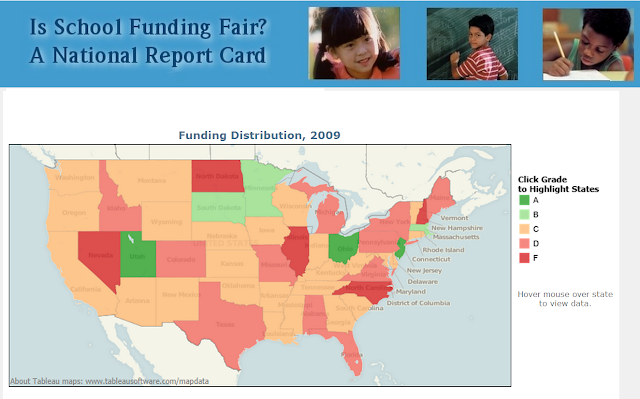Equity in Education
The top performing nations in the world in education pride itself by providing quality education to all. The Organisation for Economic Co-operation and Development (OECD) reports, "The highest performing education systems across OECD countries combine quality with equity". Ironically, most countries look at education as a way to become better than the rest. Education is seen as a tool to get ahead in society. This objective falls so far away from society's main goal of preparing its youngest members. Inequity leads to a school's failure and society pays heavily for this grave mistake in the future. Common sense dictates that schools with greater needs require more support and attention. Instead, the most effective teachers are attracted to schools with better resources and well prepared students. Facilities are usually updated in elite schools attended by children of the privileged class. Special programs are even provided for children who demonstrate high academic ability at a young age while academically unprepared kindergarten children are thrown into dilapidated schools with inexperienced and untrained teachers. With misplaced priorities and a total disregard for equity, one should not be surprised if schools are failing.
In America, the states can be graded according to how the government allocates or distributes resources for education. In terms of equity, quite a number of these states receive a failing grade:
The map above is indeed disconcerting. Eduardo Porter writes in the New York Times' article "In Public Education, Edge Still Goes to Rich":
In America, the states can be graded according to how the government allocates or distributes resources for education. In terms of equity, quite a number of these states receive a failing grade:
 |
| Above figure captured from http://www.schoolfundingfairness.org/ia_reports.htm |
The map above is indeed disconcerting. Eduardo Porter writes in the New York Times' article "In Public Education, Edge Still Goes to Rich":
The United States is one of few advanced nations where schools serving better-off children usually have more educational resources than those serving poor students,according to research by the Organization for Economic Cooperation and Development. Among the 34 O.E.C.D.nations, only in the United States, Israel and Turkey do disadvantaged schools have lower teacher/student ratios than in those serving more privileged students.
Andreas Schleicher, who runs the O.E.C.D.’s international educational assessments, put it to me this way: “The bottom line is that the vast majority of O.E.C.D. countries either invest equally into every student or disproportionately more into disadvantaged students. The U.S. is one of the few countries doing the opposite.” The inequity of education finance in the United States is a feature of the system, not a bug, stemming from its great degree of decentralization and its reliance on local property taxes.Looking at education as a "Race to the Top" is a wrong way to address problems in basic education. "No Child Left Behind" sounds a lot better if only the government looks at how to level the playing field and not focus so much on test scores and closing schools.
Many thanks for making the truthful effort to
ReplyDeleteexplain this. I feel very strong about it
and would like to read more. If you
can, as you find out more in depth knowledge,
would you mind posting more posts similar to this one with more information.
Qassim University